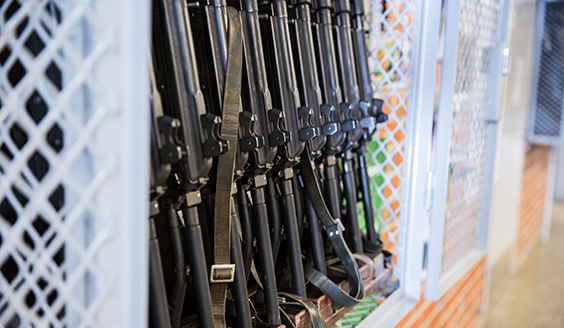
Arms control
Arms control is the general term for efforts to control or restrain the quantity or control of weapons or military assets based on bilateral or multilateral agreements or arrangements. Arms control agreements seek to increase confidence and security among states through openness and transparency.
The concept of arms control comprises the international restrictions concerning the development, production, stockpiling, dissemination, and use of conventional arms, weapons of mass destruction, and small arms.
The category for conventional weapon systems covers arms other than weapons of mass destruction, such as battle tanks, mines, small arms, artillery systems, autonomous weapon systems, and weapons in space. Weapons of mass destruction are usually perceived to include chemical, biological, and nuclear weapons.
Treaties enable conducting arms control inspections and evaluations as well as bilateral or multilateral military co-operation. Implementation of arms control measures and arms limitation treaties seek to reduce military tensions between states by enabling control and monitoring of arms and military assets.
Arms control includes
- disarmament, i.e. reducing weapon quantities or outlawing categories of arms
- limitation of massing troops and equipment, and of equivalent escalating military activity
- control and monitoring of arms, military infrastructure and transfers of technology
- increase of openness and transparency in military measures
- limitation or outlawing of certain weapons, such as biological and chemical weapons
Arms control and Finland
Finland continues to work to strengthen the treaty system of arms control, arms limitation and disarmament, to secure operation conditions for treaty organisations, and to enhance security. Finland is party to several international arms control agreements that are part of the global rules-based system. The defence administration actively participate in implementation and development of arms control agreements, arrangements, and confidence-increasing measures.
The Finnish Defence Forces implement practical measures of arms control, contribute a military view to arms control processes, provide specialist support to the Ministry of Foreign Affairs and Defence Ministry, and participate in arms control processes as applicable under the direction of the Ministry of Defence. The Finnish Defence Forces remain responsible for implementation of arms control agreements in Finland, and the processes are the responsibility of the Defence Command.
Practical measures involve
- periodic reports and exchange of military information
- conducting inspections and evaluations in accordance with the Vienna Document
- implementing inspections and evaluations abroad in accordance with the Vienna Document
- other obligations included in the Vienna Document, such as arranging visits to bases at predetermined times
- receiving Treaty on Open Skies -based observation flights at home, and conducting of these abroad
- monitoring the inspection activity in accordance with the Dayton Peace Agreement
Finland conducts evaluations, inspections and observation flights in the territories of treaty participating states. Reciprocally, Finland receives implementation of arms control measures at home.



